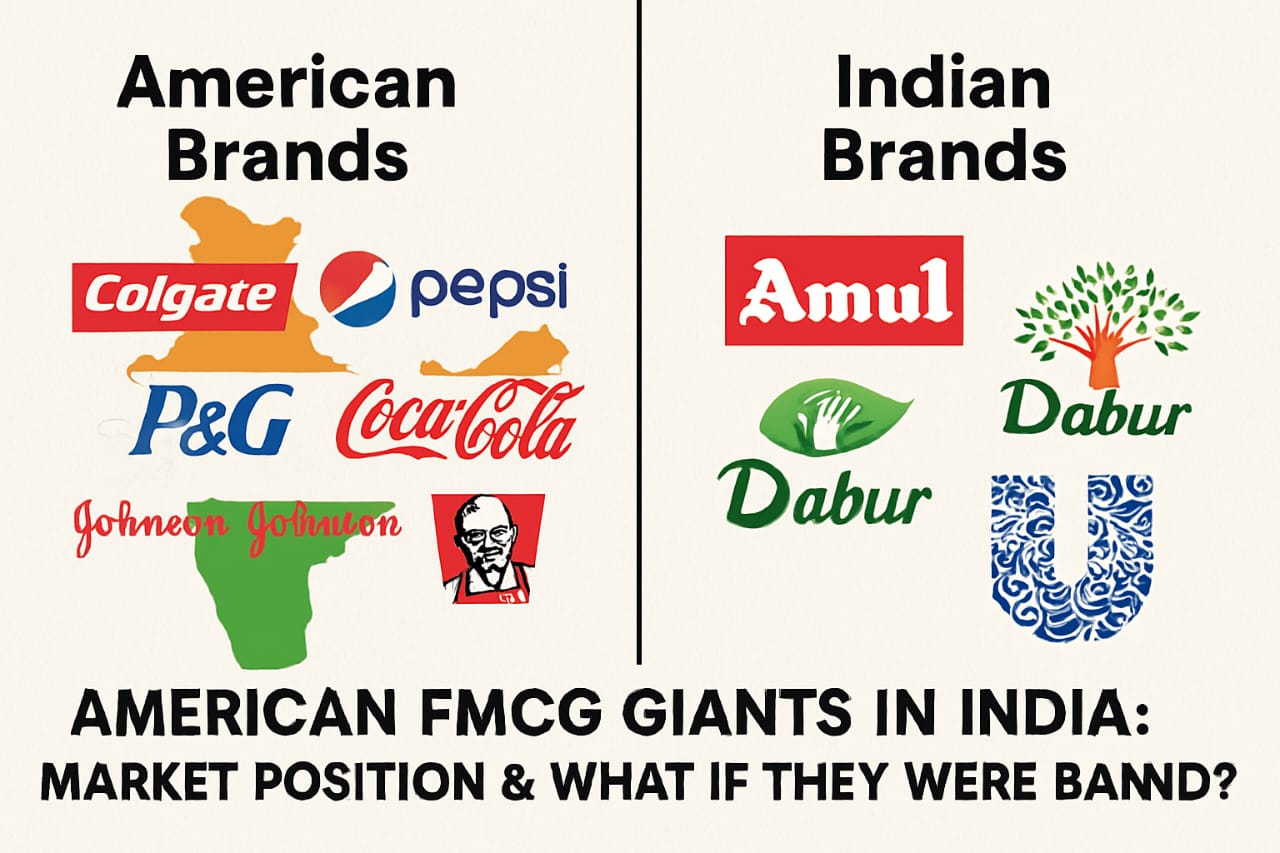Introduction
India’s fast-moving consumer goods (FMCG) industry is one of the world’s fastest-growing markets, contributing significantly to GDP, employment, and daily life. From packaged food, beverages, and personal care to household products and quick-service restaurants, the sector touches nearly every Indian home. Over the past three decades, India’s economic liberalization and growing consumer base have attracted global giants — especially American FMCG companies — which now hold a strong presence across product categories.
U.S. multinationals such as Procter & Gamble, Colgate-Palmolive, Johnson & Johnson, PepsiCo, Coca-Cola, and Mondelēz not only command high brand recall but also influence how Indian consumers shop, eat, and live. Their innovative products, aggressive marketing, and strong supply chains have helped them capture a significant share of the market, especially in urban areas.
This article explores which American FMCG companies operate in India, their brands and market share, and examines a compelling hypothetical scenario: what if India suddenly banned all these American FMCG companies? The insights reveal how such a move could impact consumer choice, local brands, pricing, and India’s trade relations.
Major American FMCG Companies Operating in India
Here’s a more comprehensive list of key U.S. FMCG players across categories:
- Procter & Gamble (P&G): Ariel, Tide, Pampers, Olay, Gillette.
- Colgate‑Palmolive (India): Toothpaste share around 50–55%.
- Johnson & Johnson / Kenvue: Clean & Clear, Neutrogena, etc.
- Haleon (formerly GSK Consumer Healthcare): Sensodyne.
- PepsiCo India: Lays, Kurkure, Tropicana, Gatorade, Aquafina.
- The Coca‑Cola Company: Coca-Cola, Thums Up, Sprite, Maaza.
- Mondelēz International: Oreo and Cadbury.
- Kellanova / Mars: snacks, cereals, confectionery.
- M. Smucker Company: jams, fruit spreads, peanut butter.
- Quick-Service Franchises (Yum! Brands): KFC, Pizza Hut, Costa Coffee.
The Competitive Landscape & Growth Trends
- Foreign brands’ combined share climbed from 19.27% in 2022 to 20.53% in 2023.
- India is now the second-largest market for Sensodyne after the U.S.
- Soft-drinks in India: Coca-Cola leads with ~60%, Pepsi holds ~33%.
- Regional brands are gaining ground in rural India.
- Parle remains India’s most consumed FMCG brand for the 13th year.
What Could Happen If India Banned All These American FMCG Companies?
| Factor | Current Scenario | Post-Ban Hypothetical |
|---|---|---|
| American FMCG Market Share | ~20–21% across categories | Would drop to 0%, causing major market disruption |
| Consumer Choice | Wide variety from trusted global brands | Short-term scarcity; limited options until local scale-up |
| Local Brand Opportunity | Moderate competition in key categories | Major opportunity for brands like HUL, ITC, Dabur, Amul |
| Pricing Impact | Competitive pricing with global supply chains | Price hikes initially; potential stabilization later |
| Geopolitical / Trade Fallout | Stable trade and investment environment | High risk of retaliation, increased tension |
Consumer & Market Impacts
- Short-Term: Replacing American FMCG brands would be challenging. Expect temporary shortages and price pressures.
- Medium to Long-Term: Indian FMCG companies would be forced to innovate and expand. Dabur, HUL, Amul, and ITC could potentially absorb demand.
- Socio-Political Effects: Consumer sentiment might favor ‘Swadeshi’ products.
Broader Implications & Conclusion
While U.S. FMCG companies dominate several Indian consumer categories, India’s resilient domestic ecosystem could step up in the event of a ban. Yet, such a shift would come at the cost of short-term disruption, altered trade dynamics, and global uncertainty.
Any movement toward import restrictions should be measured and strategic, emphasizing consumer welfare and industry resilience.
Source Of Article:
- “Colgate (U.S.) holds an estimated 43% share of India’s toothpaste market, compared with Dabur’s 17%.” Reuters
- Economic Times / Brand Footprint Report (Worldpanel by Numerator): Confirms that Parle remains India’s most consumed FMCG brand for the 13th consecutive year.The Economic Times
- Offers snapshot data on India’s FMCG market size in 2025 (~$211–245 billion) and growth trends.Inciflo
- ₹245.39 billion (2024), projected to reach ₹1,108.48 billion by 2033.IMARC Group
